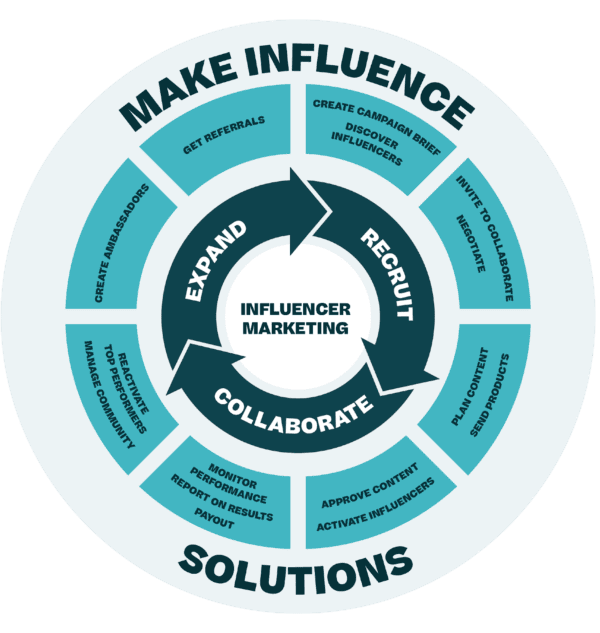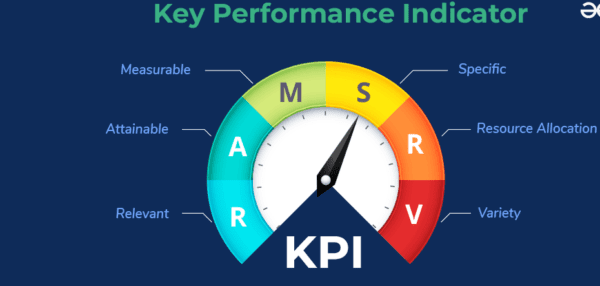Influencer marketing has become an increasingly popular way for e-commerce businesses to promote their products and services. By partnering with social media influencers, companies can reach new audiences and build brand awareness in an authentic and relatable way.
Influencer marketing involves collaborating with individuals with a large following on social media platforms like Instagram, YouTube, and TikTok. These influencers can range from celebrities and athletes to everyday people who have built a loyal following around a particular niche or interest. By partnering with influencers, e-commerce businesses can tap into their audience and leverage their credibility to promote their products and services. A recent survey found that 63% of consumers trust influencer opinions more than what brands say about themselves.
So, how can you get started with influencer marketing for your e-commerce business? Stay tuned for our guide on the best practices and strategies for leveraging influencer marketing to drive sales and grow your business.

Understanding Influencer Marketing
Influencer marketing has become an integral part of e-commerce marketing strategies. It is a form of social media marketing that leverages the influence of popular social media users, known as influencers, to promote products or services to their followers. In this section, we will explore the rise of influencer marketing and define an influencer.
The Rise of Influencer Marketing
In recent years, influencer marketing has gained immense popularity due to the increasing use of social media platforms. Social media has provided a platform for influencers to showcase their talents, share their opinions, and connect with their followers. As a result, influencers have become an essential part of the social media landscape, with millions of followers across different platforms.
The rise of influencer marketing can be attributed to the fact that traditional forms of advertising are no longer as effective as they used to be. Consumers have become more sceptical of traditional advertising and are turning to social media for recommendations from people they trust. This has led to the rise of influencer marketing as a way for brands to connect with their target audience more authentically and engagingly.
Defining the Influencer
An influencer has a significant following on social media platforms and can influence the opinions and behaviours of their followers. Influencers can be anyone from celebrities to micro-influencers with a more minor but highly engaged following. The key to identifying an influencer is their ability to engage with their followers and build a loyal community around their brand.
Influencers are chosen based on their relevance to the target audience and engagement rate. The engagement rate measures how many people interact with an influencer’s content, including likes, comments, shares, and other forms of engagement. Brands look for influencers with a high engagement rate because it indicates that their followers are highly engaged and are likely to take action based on their recommendations.
Authenticity is another critical factor that brands look for in influencers. Influencers who are authentic and genuine in their content are likelier to build a loyal following and significantly impact their audience. This is because their followers trust them and value their opinions and recommendations.
In summary, influencer marketing is essential to e-commerce marketing strategies. It leverages the influence of popular social media users to promote products or services to their followers. To be successful in influencer marketing, it is essential to understand its rise and the key factors that define an influencer, such as their engagement rate, authenticity, and relevance to the target audience.

Influencers in E-Commerce
Influencer marketing has become a popular marketing strategy for e-commerce brands due to its ability to reach target audiences and generate high ROI. This section will discuss the types of e-commerce influencers and how to select the right platform for your brand.
Selecting the Right Platform
Choosing the right platform for your influencer marketing campaign is crucial to its success. Instagram, YouTube, and TikTok are popular platforms for influencer marketing due to their large user base and high engagement rates. Instagram is an excellent platform for visual content and reaching a younger audience, while YouTube is ideal for long-form video content and reaching an older audience. TikTok is a newer platform ideal for attracting a younger audience through short-form video content.
Shopify is a popular e-commerce platform that allows brands to integrate influencer marketing into their marketing strategy quickly. With Shopify, brands can track influencer sales and manage their influencer relationships.
Types of E-Commerce Influencers
There are three main types of e-commerce influencers: micro-influencers, macro-influencers, and nano-influencers. Micro-influencers have a smaller following but a highly engaged audience that trusts their recommendations. Macro-influencers have a more significant following and can reach a wider audience, but their engagement rates may not be as high. Nano-influencers have a very small following but can be highly effective in niche markets.
When selecting influencers for your e-commerce brand, it’s essential to consider the type of influencer that will be most effective for your target audience. Micro-influencers may be more effective for niche markets, while macro-influencers may be more effective for reaching a wider audience.
In conclusion, influencer marketing can be a powerful tool for e-commerce brands to reach their target audience and generate high ROI. By selecting the right platform and type of influencer, you can create a successful influencer marketing campaign for your brand.
Strategizing Influencer Campaigns
When it comes to influencer marketing, a solid strategy is essential to ensure a successful campaign. Here are some key factors to consider when strategizing your influencer campaign.
Developing an Influencer Strategy

Before reaching out to influencers, you must clearly understand your goals and target audience. Determine what you want to achieve with your campaign and who you want to reach. This will help you identify the right influencers to work with.
Consider the type of content you want the influencers to create and how it aligns with your brand message. Determine the key performance indicators (KPIs) you will use to measure the campaign’s success. These could include engagement rates, conversion rates, and return on investment (ROI).
Budgeting and Compensation
Budgeting and compensation are among the most critical aspects of any influencer campaign. It would be best to determine how much you are willing to spend on the campaign and how you will compensate the influencers.
When it comes to compensation, there are several options to consider. You could offer influencers a flat participation fee, pay them per post, or provide them with a commission based on the sales generated through their discount code. To avoid misunderstandings, being transparent with your influencers about compensation from the outset is essential.
In addition to compensation, you must also budget for the products or services you promote and any additional costs associated with the campaign, such as shipping and handling.
Developing a solid influencer strategy and budget ensures your campaign is successful and delivers a positive ROI.
Measuring Campaign Success
One of the main benefits of influencer marketing is its measurability. By tracking the right Key Performance Indicators (KPIs), you can assess your campaign’s success and make data-driven decisions to optimize future campaigns. Here are some important KPIs to consider:
Key Performance Indicators

- Engagement Rates: One of the most important KPIs to track is engagement rates. This includes likes, comments, shares, and clicks. High engagement rates indicate that your influencer’s content resonates with their audience and can help increase brand awareness.
- Conversions: Conversions are another important KPI to track. This includes sales, sign-ups, and other actions that align with your campaign goals. You can measure your campaign’s ROI and make data-driven decisions to optimize future campaigns by tracking conversions.
- Brand Awareness: Another important KPI to track is brand awareness. This includes metrics such as reach and impressions. By tracking brand awareness, you can assess the impact of your campaign on your target audience and make data-driven decisions to optimize future campaigns.
Analyzing Engagement and Conversions
Analyzing engagement and conversions is crucial to understanding the success of your influencer marketing campaign. Here are some tips to help you analyze engagement and conversions:
- Track Engagement Rates: Use tools like Google Analytics or social media analytics to track engagement rates. Analyze which posts generate the most engagement and identify common themes or trends.
- Analyze Conversions: Use tools such as conversion tracking pixels or UTM codes to track conversions. Analyze which influencers or posts generate the most conversions and identify common themes or trends.
- Make Data-Driven Decisions: Use insights from analyzing engagement and conversions to make data-driven decisions. For example, if specific posts generate higher engagement rates or conversions, you can adjust your campaign strategy accordingly.
By tracking the right KPIs and analyzing engagement and conversions, you can measure the success of your influencer marketing campaign and make data-driven decisions to optimize future campaigns.
Maximizing Influencer Relationships
Influencer marketing in e-commerce is about building solid relationships with influencers and leveraging those relationships to drive brand awareness and sales. Here are some tips to help you maximize your influencer relationships:
Building Long-Term Partnerships
When it comes to influencer marketing, building long-term partnerships is critical to success. This means working with influencers who are a good fit for your brand and interested in creating a long-term relationship.
Building solid relationships based on trust and mutual respect is essential to long-term influencer partnerships. This means getting to know your influencers and working with them to create authentic and engaging content.

Leveraging User-Generated Content
One of the most effective ways to leverage your influencer relationships is to use user-generated content (UGC) in your marketing campaigns. UGC is content created by your customers or fans, and it can be a powerful tool for building brand loyalty and driving sales.
To leverage UGC in your influencer marketing campaigns, you can work with your influencers to create content that encourages their followers to share their experiences with your brand. This can include things like product reviews, photos, and videos.
By leveraging UGC in your influencer marketing campaigns, you can tap into the power of social proof and build brand loyalty among your customers.
In conclusion, building solid relationships with influencers and leveraging those relationships to drive brand awareness and sales is critical to success in influencer marketing. By building long-term partnerships based on trust and mutual respect and leveraging UGC in your marketing campaigns, you can maximize the impact of your influencer relationships and drive accurate results for your e-commerce business.


